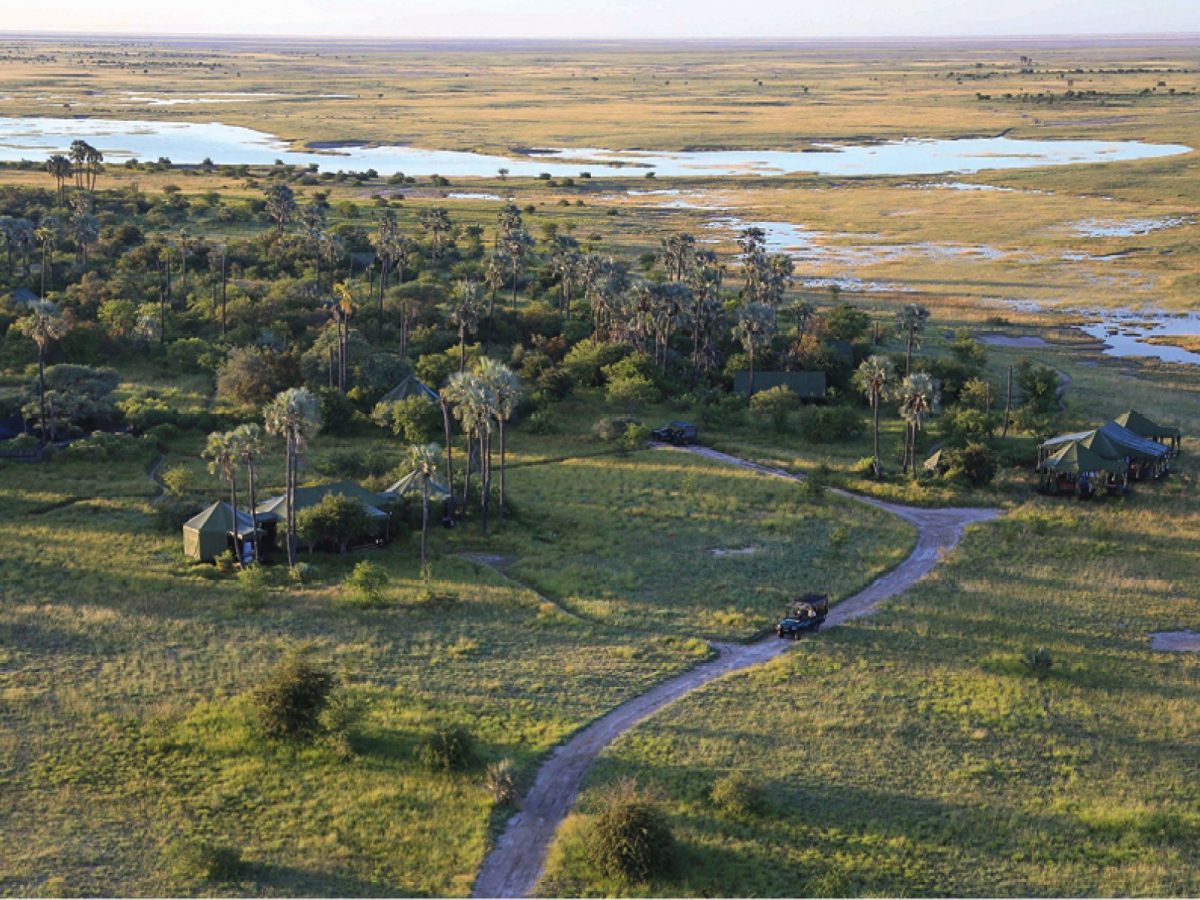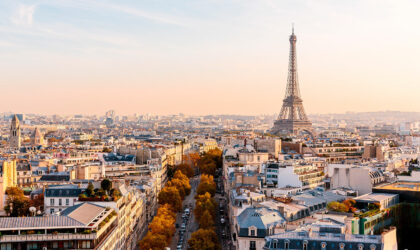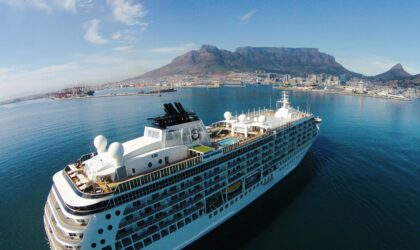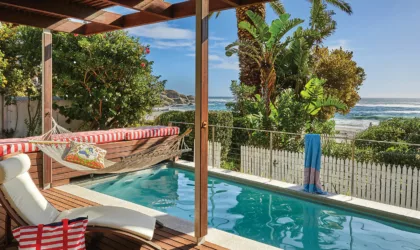I’m not sure what characterises the real soundtrack of the Makgadikgadi Pans. The rustle of makalani palms in the easterly wind? The ring of cicadas in the quiet of an early-summer afternoon? The croaky warble of pied crows that dive and wheel in the heat?
No, I think it is simply the aural assault of absolute silence that descends when you stand quietly on the salt flats of Ntwetwe Pan, one of three saltpans that make up the remarkable Makgadikgadi. They are among the largest on the planet, and – alongside the Okavango Delta – have justifiably become one of Botswana’s biggest drawcards for well-heeled tourists.
But it wasn’t always this way. Once these saltpans were ignored by all but hunters in search of ivory and animal skins. One of those was Jack Bousfield, an accomplished hunter – and later legendary safari guide – who first made camp here in the 1960s. He certainly knew a good site when he saw one, and it is for him that the remarkable Jack’s Camp was named.
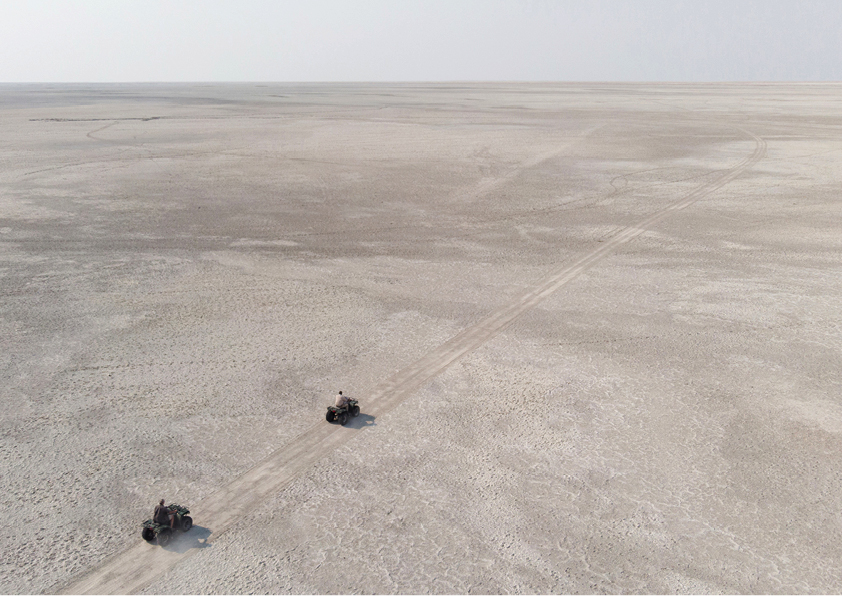
Homage to yesteryear
Jack’s Camp sits on a vast private concession bordering the Makgadikgadi Pans National Park, and is one of just three camps sharing more than 400 000 hectares of saltpans and grassy plains. It’s been a fixture of the Makgadikgadi since 1992, and retains all the charm of a vintage safari adventure. The suites and communal areas are all under canvas, and the camp is entirely unfenced. At night the contact calls of nearby lions rumble through the tented walls, raising the pulse rate of anyone lucky enough to hear them.
The 10 Bedouin-style tents are comfortably luxurious, embracing the camp’s pioneering heritage. Beds are swathed in mosquito nets and raised above wooden floors, while a vintage fan does its best to take the edge off the desert heat. Family photos and African artifacts decorate the retro travel trunks and dressers.
That pared-down simplicity is no accident, says Dave van Smeerdijk of safari operator Natural Selection and co-owner of Jack’s Camp: ‘It’s going back to the essence of an African safari. It’s a conscious step back from unnecessary “bells and whistles”, and instead embraces a simpler, more authentic, approach to being on safari. It’s about the experience of being in the bush, about the game, and about the quality of guiding.’
Facets of history
Aside from lazy afternoons on your deck, you’ll probably spend little time in your tented suite. While the bracing water of the pool offers a welcome respite in the heat of a Makgadikgadi afternoon, the real heart of Jack’s Camp is the communal lounge and dining area, where a long table is set each evening for dinner. It’s a candlelit affair, with vintage silverware and generous safari cuisine. The small bar and library tents on either side offer a quiet escape with a host of swingbeds and couches for your relaxation pleasure.
The dining tent doubles up as a museum, and the cabinets of curiosity are filled with a fascinating array of artefacts that illustrate the geology, history and anthropology of Botswana. In one lies a selection of stone tools and animal skulls from the region, while behind the glass of another are fossilised trilobites and ammonites; evidence that the Makgadikgadi Pans were once one of the world’s largest inland seas.
The animals, the birds and the silence
But it’s the animals that are alive and kicking that most guests have flown in to see. Midway between the gravel airstrip and the camp, a waterhole brings animals from afar. A pair of hefty bull elephants stake their claim on the freshest water, while dozens – no, hundreds – of zebra patiently wait their turn. Thanks to the felling of fences and decades of dedicated conservation work in Botswana, this corner of the Makgadikgadi is today home to an annual migration of upwards of 50 000 zebra and wildebeest.
In fact, Natural Selection currently channels 1.5 percent of its annual revenue (revenue, not profit) to selected conservation projects across Southern Africa. That includes the Makgadikgadi Conservation Initiative, which works to protect and enlarge these ancient migration routes.
But don’t only get excited about the big game. Just as enchanting are the smaller residents: lilac-breasted rollers flitting between the trees, a secretary bird hunting in the grasslands, or a white-backed vulture lumbering into the sky to soar on the thermals. On our last day, we spent an entertaining afternoon in the company of a nearby meerkat colony and discovered the lair of a family of endangered brown hyena.
While the animal sightings are superb, the highlight of any visit to Jack’s Camp is the time spent out on the saltpans. The endless salt flats stretching out to the horizon and beyond. Zebra trotting through a shimmering pan of water, a memory of the rains long since past. And, above all, that unforgettably beguiling silence.
To find out more and to book visit naturalselection.travel or call 021 001 1574 / 011 326 4407
